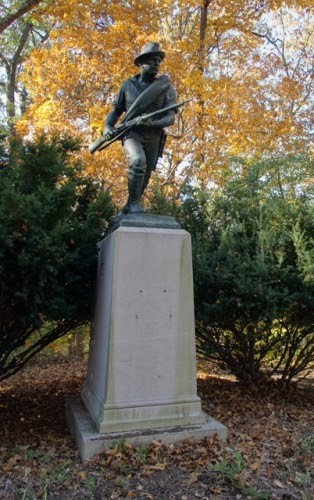Oystering in New Haven
By Marie Connors
Where is Clamtown? Would you consider an oysters a delicacy? Why did the oyster business virtually die in the Quinnipiac River in New Haven?
In her book on Fair Haven, Doris B. Townshend explains that originally the town named “Dragon” was known colloquially as Clamtown. This was a hot spot on the Quinnipiac River (older spelling “Quinepiac”) where an annual oyster derby took place on September 1. For about ten years from 1820-1830 this was a fun, exciting family-oriented event where muscular men raced in canoes and all kinds of boats to the oyster beds. Once there, they raked up and pulled up with large tongs as many oysters as they could. Then they paddled or rowed back to shore where wagons were waiting to deliver the loads to the oystermen's houses.
They whacked each oyster with a hammer until the bill end of the oyster snapped off. Then using a knife, they removed the oyster, which had to be washed, measured, and thrown into kegs. Experienced shuckers (mostly men) opened 500-750 oysters per hour and were paid on a piecework basis, averaging five to nine dollars weekly.
Oyster beds stretched from the upper reaches of the Quinnipiac, Mill and West Rivers to the harbor entrance. The warm temperature and balanced salinity of the harbor present ideal conditions for the abundance of oysters so that people could pick them by hand. But by 1862 the increasing demand for oysters was causing a shortage.
Oyster-bed cultivation began in the 1820s when artificial beds were created. Connecticut oystermen gathered the free-swimming oyster larvae, planted them on artificially created beds of oyster shells and raised them to maturity, a period of three to four years. By the late Nineteenth Century, oyster cultivation in Connecticut developed into a major industry.
New Haveners established laws regulated the oyster fishery as early as 1762. This first of these stated that no gathering of oysters could occur from May 1 to September 1, which included spawning (fertilization) season. In 1784 a new restriction limited only residents to be able to pick two bushels of oysters a day. Lastly, in 1855 the state mandated that persons could only own oyster lots of two acres or less. Naturally, residents found ways to flout these laws; for example such as buying acreage under other names in their family.
Today's culinary cuisine and dietary preferences have relegated oyster to a niche palate. In the Eighteenth and Nineteenth Centuries, however, oysters ran the gamut from haute cuisine to poor man's lunch. According to Eleanor Clark, since oysters were so plentiful and inexpensive, they also filled up the plates of the working class.
In other ways, the oyster, in ancient terms called “ostrea,” was held in esteem. James Watson in his parody of the oyster says: “As down his throat, the welcome moisture flows, quick leaps the blood, and with new vigor glows; a genial warmth renews the sluggish veins, and all the frame a freshen'd life attains.”
Oysters faced many challenges after 1910 when many factors caused the industry's downfall. Small harvests during the “lean years” of 1905-25 were due to abnormally low temperatures during the spawning period. Predators, such as starfish, virtually choked the life out of the oysters, drought, and, worst of all, water pollution in an industrializing waterfront brought tragedy to the great oyster.
Yet, hope is on the horizon. Copps Island Oysters is one of a few revival companies operating an oyster farming business since 1994. Norm Bloom, the founder, runs a hatchery combining new hatchery methods with traditional methods of seeding oysters in the Sound. They sell ninety percent of their oysters to restaurants and even run a farm stand on Saturdays. Their business supports the community with jobs, along with providing positive environmental impact. VIVA THE OYSTER!
 |
| Figure 1: Detail of "Oyster Grounds, State of Connecticut," showing private oyster beds, 1931 (Courtesy of Mystic Seaport Museum) |
 |
| Figure 1: "Shucking Oysters," by the artist Alexander Rummler (Courtesy Maritime Aquarium, Norwalk, CT) Bibliography |
Boyle, Doe. “Oystering in
Connecticut, from Colonial Times to the 21st Century,” Connecticut
History.org. https://connecticuthistory.org/oystering-in-connecticut-from-colonial-times-to-today (accessed August 27, 2020).
Clark, Eleanor. The Oysters of Locmariquer. Hopewell, NJ: Ecco Press, 1964.
Galpin, Virginia M. New Haven's Oyster Industry, 1638-1987. New Haven: New Haven Colony
Ingersoll, Ernest. The Oyster Industry: The History and Present Condition of the Fishery Industries. Washington, D.C.: Government Printing Office, 1881.
New York Tribune, January 9, 1957.
Sonnenfeld, Sophie. “A New Oyster Era Blooms,” New Haven Independent, August 5, 2021.
The Historical Marker Database, “The Oyster Industry in New Haven.”
Townshend, Doris B. Fair Haven: A Journey Through Time. New Haven, The New Haven Historical Society, 1976.
Watson, James. Ostrea; or, The Loves of the Oysters. New York: T. J. Crowen Publishers, 1857.



Comments
Post a Comment